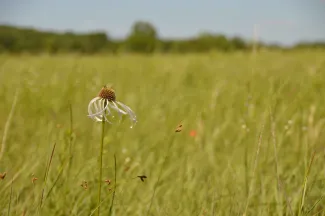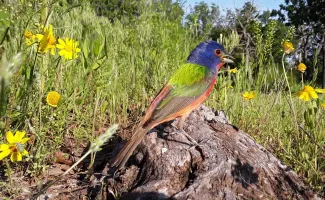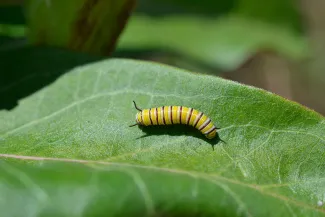For landowners and managers, weeds most often play the role of the villain meant to be battled and destroyed. But instead of undermining landowners at every turn, many native “weeds,” or forbs, can play important roles in the pasture, garden and woods. Underneath the dark cape and mask they’ve been forced to wear for decades, these beneficial forbs may actually be the unsuspecting superhero of the story, or at least the trusty sidekick.

Many native “weeds” can actually benefit pastures, gardens and woodlands.
Forbs are generally broadleaf, flowering plants that are not grass-like or woody vegetation. Beneficial “weeds,” or forbs, include sunflowers, crotons, ragweeds, and even native legumes like slender lespedeza (as opposed to the nonnative, invasive sericea lespedeza). They can either grow during the cool or warm season, and are nutrient-dense plants with deep root systems that can act as mineral pumps that reduces competition with grasses for water. Forbs are also some of the first plants to green up in the spring, and to come up after a disturbance, like prescribed fire or strip disking.
When a landowner grazes a pasture with higher amounts of native, beneficial forbs, they should expect to supplement less. When hayed with other warm season grasses, forbs will improve the hay quality by adding in trace minerals. Legumes such as partridge pea, Illinois bundleflower and prairie clover are nitrogen fixers, which can ultimately lead to a reduced need for nitrogen-based fertilizer. Forbs can also attract pollinators and predatory insects to garden areas, leading to increased plant yields, and maybe even a decrease in pest pressure.
From a wildlife standpoint, native forbs can serve as two important habitat components: food and cover or shelter.
A variety of wildlife depend on forbs as a food source. Songbirds and upland game birds like quail and turkey can feed directly on the seeds produced, or indirectly on the insects attracted to the plants and blooms. Additionally, many pollinators feed on nectar produced by flowering plants and use forbs as a host for their eggs and caterpillars.

Painted buntings are one of many songbirds that benefit from forb-rich areas.
Milkweeds are the well-known host for monarch butterflies, and provide developing caterpillars with a shroud of protection. Milkweed plants contain chemical compounds that are ingested by the growing monarch caterpillars and make the caterpillars poisonous to most vertebrates when preyed upon.

Monarch caterpillars are dependent on milkweed plants.
Other forbs like partridge pea, beggar’s lice, asters and verbenas provide a large amount of green forage for deer and small mammals. In fact, somewhere around 70 percent of the spring and summer diet of deer is provided by forbs. Many of the commercially available food plot mixtures planted by hunters contain high percentages of forbs like clover, cowpea and chicory. However, native forbs can provide higher levels of crude protein that is more readily absorbed and digested.
Forbs also provide cover for fawns while the mother is feeding and for small mammals avoiding aerial predators like kestrels and other raptors. Songbirds and game birds may use forbs as shade and protective cover, while other songbirds may use the forbs as perches for resting or hunting insects.
In the end, the plants we may have deemed as “weeds” may play a role in soil health, grazing management, and especially in the survival of wildlife. Schedule a visit with the Wildlife Department’s private lands staff to learn how to increase the native forbs on your property at wildlifedepartment.com.